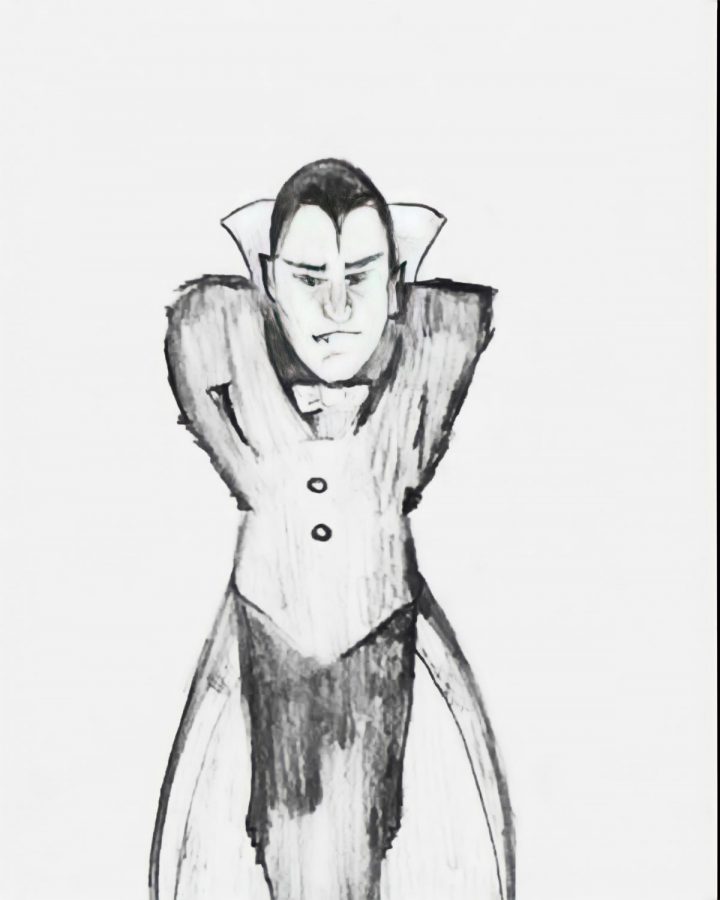How Vampires Came to be
from Vlad the Impaler to Edward Cullen
Vampires: a pop-culture symbol seen at every Graded Halloween parade. They seem to be as old as time – it’s hard to pinpoint when society at large became aware of their existence. But most anyone from preschool to a nursing home can tell you the basic knowledge about the mythology surrounding these bloodsuckers. Where do these legends come from? And at what point in history did these bloodsuckers become so popular?
According to National Geographic, one of the first mentions of vampires can be found in the 730’s C.E., and it is theorized that the vampire developed from other monsters and as a rationale for diseases at the time. However, we can cleanly pinpoint that the blood-sucking and long-fanged part of the myth came from the decomposition of the human body. As the skin on a dead body shrinks, teeth and nails appear to be longer, creating the illusion of long incisors. Additionally, as the organs shut down something called “purge fluid” can leak out of the body’s orifices, making it look a lot like the deceased had been feeding on blood. Our ancestors, being less knowledgeable in the matters of natural sciences, began to believe that dead bodies could show who had been a vampire in their lifetime.
These habits all culminate in the “Mercy Brown vampire incident” which occurred in Rhode Island in 1892, being one the most interesting, best documented American “vampire sightings.” Having died of tuberculosis at age 19, Mercy’s body was found to be very well preserved apart from blood around her mouth. Due to this, Mercy was blamed for the deaths of her family members which had occurred shortly before hers (presumably also due to tuberculosis). This incident can very well be considered the start of the idea that America was populated with secret vampires — something that later gave us Edward Cullen, Buffy Summers, and the Salvatore brothers.
In terms of literature, the first work of fiction in the “Vampire Literature” genre, The Vampyre by John William Polidori, was published in 1819: the short story follows Lord Ruthven, a mysterious, seducing vampire. The story was immediately popular and Ruthven was later seen all over subsequent vampire lore, including the 2020 Dracula adaptation. Most interestingly, there was a completely unrelated, non-fictional Lord Ruthven, also known as the Earl of Carlisle —a name that rings a bell to every fan of Twilight.
The Vampyre was closely followed by possibly the most iconic work of vampire literature to date: Bram Stoker’s Dracula. Published in 1897, the book follows Count Dracula, a vampire inspired by Vlad the Impaler (also known as Vlad III Dracula), who was a real Romanian emperor rumored to have a taste for human blood. After its publication, Dracula was an immediate bestseller, surpassing works of other famed authors such as Edgar Allen Poe and Mary Shelley. Additionally, it spawned over 200 screen adaptations and created the most popular vampire costume, one you’ll see at Graded every year. Count Dracula is what can be considered a base template for every subsequent blood-sucker after him. He is depicted as cold, violent, charming, and good-looking. Additionally, the Transylvanian Count has pale skin, long teeth, an aversion to holy items, garlic and sunlight, red eyes, dresses in all black, can manipulate others, shapeshift, and enjoys human blood —particularly from innocent young women. Moreover, Dracula can turn someone into a vampire simply by biting them, a part of the myth that has been developed further in other works and never abandoned.
In 1976, Anne Rice took over the market with Interview with a Vampire, a work that would later be adapted into a movie featuring one of Brad Pitt’s most iconic roles. The story is centered around Louis de Pointe du Lac, a 200-year-old vampire, who eventually takes in a young girl named Claudia as a sort of daughter. Rice’s vampires are depicted as conventionally attractive and young-looking. Rice also takes the myths further by giving vampires over 1000 years of age extra abilities and developing the fact that vampires are nocturnal creatures. She strays from Stoker’s version by deleting some facts that apply to Dracula and deepening the implications of becoming a vampire. To become a vampire in this realm of fiction, a human must be drained of their blood by a vampire and the pair must participate in a sexual act.
The next popular set of fictional vampires are seen in Buffy The Vampire Slayer. The story contains a 1992 movie and a highly popular TV series aired by WB from 1997 to 2003. It follows a young Buffy Summers, who is the newest in a line of mortals called “Vampire Slayers” and, for once, we see a piece of popular vampire fiction that is empowering to women and shows they are not always falling prey to seductive male vampires. Though the series included several other supernatural beings, vampires are definitely seen most often. Buffy’s vampires are slightly different as they can feed on all mammal blood, although humans are their favorite. In the show, vampires seem quite easy to kill as they can be turned into dust by wooden stakes to the heart, setting them on fire, through decapitation, and with the usage of holy items. The sunlight myth continues in this work as vampires will be set on fire when in direct sunlight. Additionally, the vampiric abilities in Buffy the Vampire Slayer include mind reading, photographic memory, and shape-shifting. However, some new features in this work are that the existence of good vampires is adopted (the main character is even in a relationship with two of them) and that vampires are not conventionally attractive (they are seen as demons with wrinkled faces for the most part).
This leads us to the most iconic vampires of the 2000s: the Cullens. The Twilight Saga by Stephenie Meyer was an instant hit, making it to #5 on the New York Times best-selling list the month the first book was released. The story follows 17-year-old Bella Swan and her 200-something-year-old vampire boyfriend Edward Cullen. These vampires are benign and mean no harm to any human beings, considering themselves “vegetarian” (meaning they only consume animal blood). Twilight is possibly the most famous supernatural romance, containing edits to the original characteristics that are used more often than not in preceding vampire stories. In Meyer’s version, old myths get new explanations including sparkly skin and vampire venom additionally, these vampires each have their individualized supernatural ability, such as seeing the future, super strength and mind reading.
This leads us to the most recent iconic piece of vampire fiction – The Vampire Diaries. The series aired on The CW from 2009 to 2017, reaching a total number of 171 episodes. To no one’s surprise, this was also a smash hit, with the first season amassing over 3.60 million viewers. It follows teenaged human girl Elena Gilbert and her romantic relationships with brothers Damon and Stephan Salvatore. The story takes place in the town of Mystic Falls, where it seems as though half of the population is some sort of supernatural creature. This adaptation keeps lots of the original features but new features include a very complex, multi-step process to becoming a vampire, and rings made with lapis lazuli which keep vampires from disintegrating in sunlight. TVD also takes influence from its predecessor, Twilight by having vegetarian vampires and unique supernatural abilities (though the plot tends to focus on mind control).
Overall, it seems as though content consumers have an obsession with vampires and it’s not hard to see why. They have set guidelines that can be slightly bent making it easy for screenwriters and they often fall into two of the most intriguing genres, romance, and horror. It is hard to know what inspires this refresh of the myth every couple of years, but one thing is sure: vampires will be embedded into popular culture for a long time. In conclusion, vampires will never go out of style, and as for vampire fiction haters: if you can’t beat them, join them (and by them I mean me, because I too love vampire fiction against my better judgment).
Sources: National Geographic, NewEngland.com, Wikipedia, Fandom















